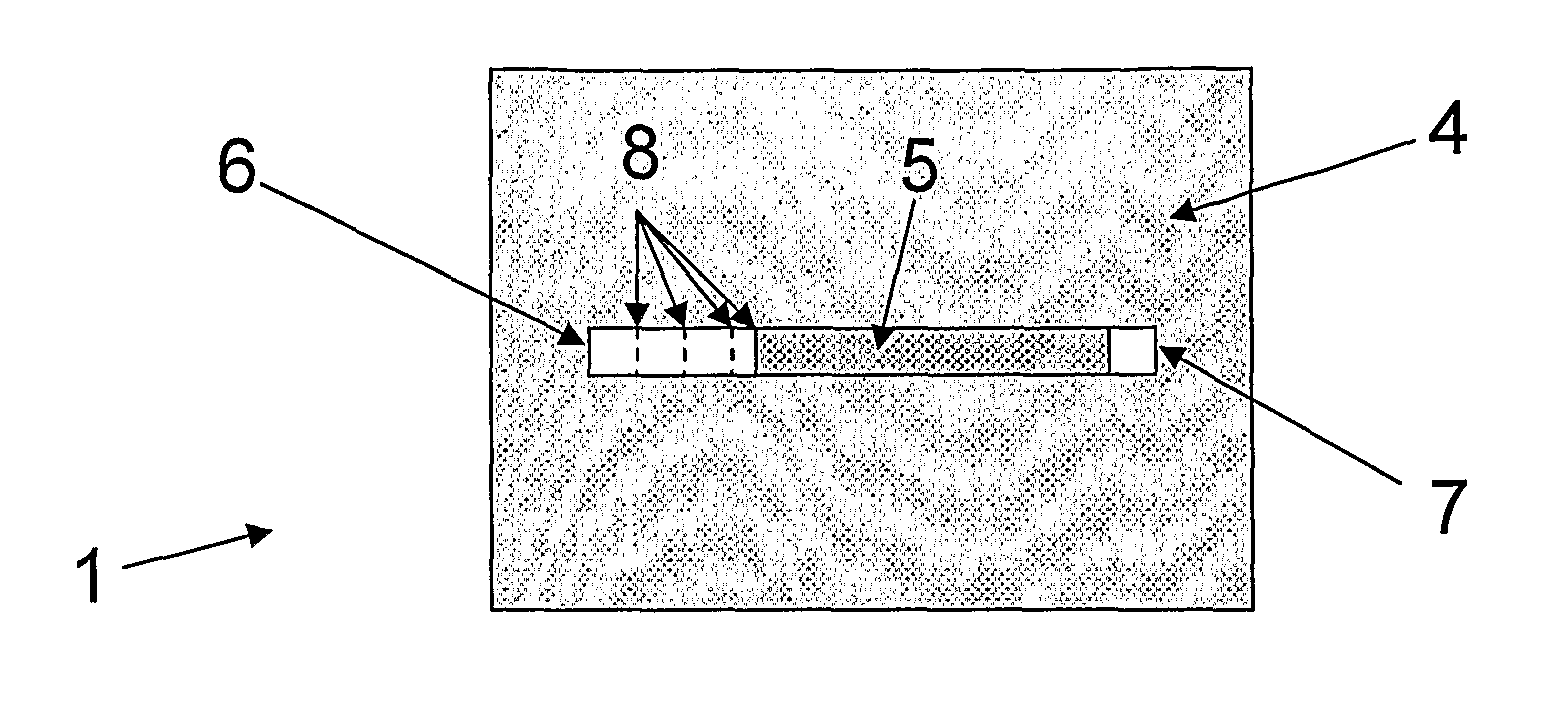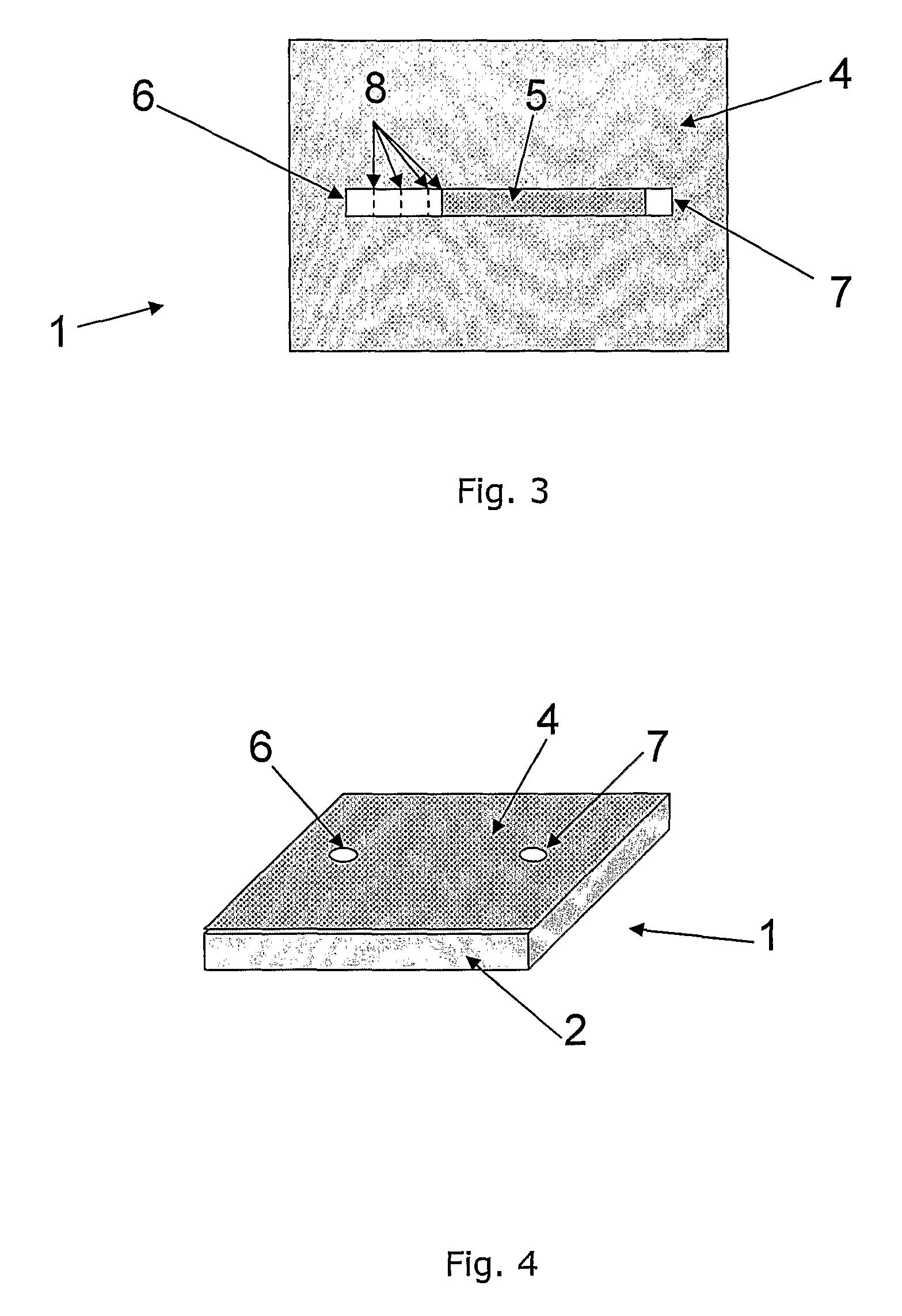Method of forming a flow restriction in a fluid communication system
a technology of fluid communication system and flow restriction, which is applied in the direction of decorative arts, hollow objects, chemical vapor deposition coating, etc., can solve the problems of difficult to repeatedly manufacture flow restrictions having resistivities within the same narrow limited tolerance, and difficult to provide flow restrictions having precise and reliable flow resistivity, etc., to achieve the effect of improving the accuracy of flow resistivity
- Summary
- Abstract
- Description
- Claims
- Application Information
AI Technical Summary
Benefits of technology
Problems solved by technology
Method used
Image
Examples
second embodiment
[0051]FIG. 5 is a perspective view of a flow restrictor system 1 formed by means of a method according to the invention. The flow restrictor system 1 of FIG. 5 comprises two substrates 2, each having a groove 3 formed in a substantially planar surface thereof. The substrates 2 are then joined together in such a manner that the grooves 3 are arranged opposite to each other, thereby forming a channel. An inlet opening and an outlet opening (not shown) are formed in one of the substrates 2. Subsequently, material is removed adjacent to the inlet opening and / or adjacent to the outlet opening, thereby decreasing the length of the channel and decreasing the flow resistivity of the flow restrictor, until a desired flow resistivity is obtained.
[0052]FIG. 6 shows a substrate 2 having a groove 3 formed in a substantially planar surface thereof. The groove 3 extends the entire width of the substrate 2. Accordingly, an inlet opening 6 is formed at one end part of the substrate 2, and an outlet ...
fifth embodiment
[0054]FIGS. 8A-8C illustrate the method of the invention. According to this embodiment the groove is split into two grooves 3a, 3b arranged in parallel with a separating wall 11 there between. The parallel section of the grooves 3a, 3b defines a length 12. In FIG. 8A the grooves 3a, 3b are completely separated.
[0055]In FIG. 8B a part 13a of the separating wall 11 has been removed, thereby forming a passage between the grooves 3a, 3b and decreasing the length 12. As a consequence, the flow resistivity of the flow restrictor is decreased.
[0056]In FIG. 8C a larger part 13b of the separating wall 11 has been removed. Thereby the length 12, as well as the flow resistivity of the flow restrictor, has been further decreased.
[0057]Thus, according to the method illustrated in FIGS. 8A-8C, the flow resistivity is adjusted by removing a part of the separating wall 11, thereby reducing the length 12.
[0058]FIG. 9 shows a substrate 2 in which a groove 3 has been formed. Subsequently, material has...
PUM
| Property | Measurement | Unit |
|---|---|---|
| width | aaaaa | aaaaa |
| width | aaaaa | aaaaa |
| length | aaaaa | aaaaa |
Abstract
Description
Claims
Application Information
 Login to View More
Login to View More - R&D
- Intellectual Property
- Life Sciences
- Materials
- Tech Scout
- Unparalleled Data Quality
- Higher Quality Content
- 60% Fewer Hallucinations
Browse by: Latest US Patents, China's latest patents, Technical Efficacy Thesaurus, Application Domain, Technology Topic, Popular Technical Reports.
© 2025 PatSnap. All rights reserved.Legal|Privacy policy|Modern Slavery Act Transparency Statement|Sitemap|About US| Contact US: help@patsnap.com



